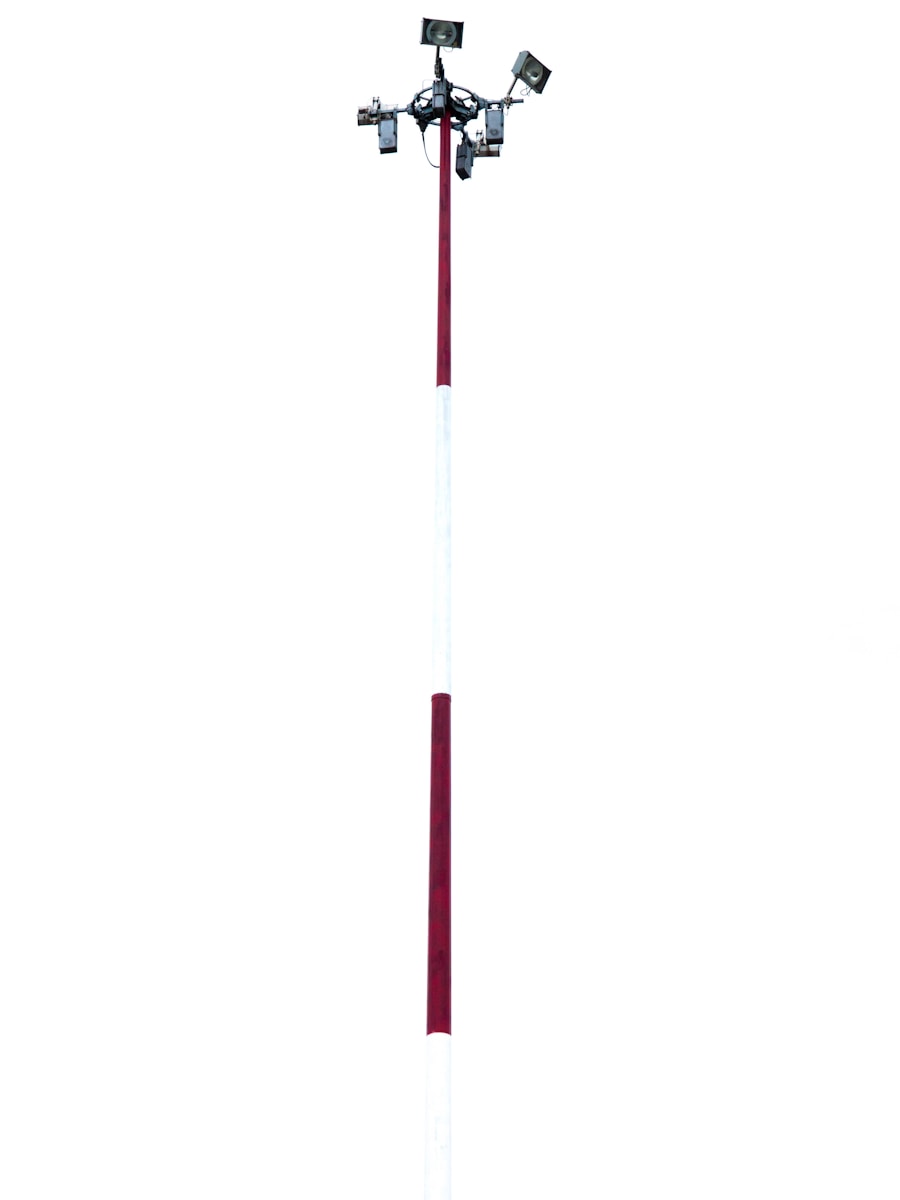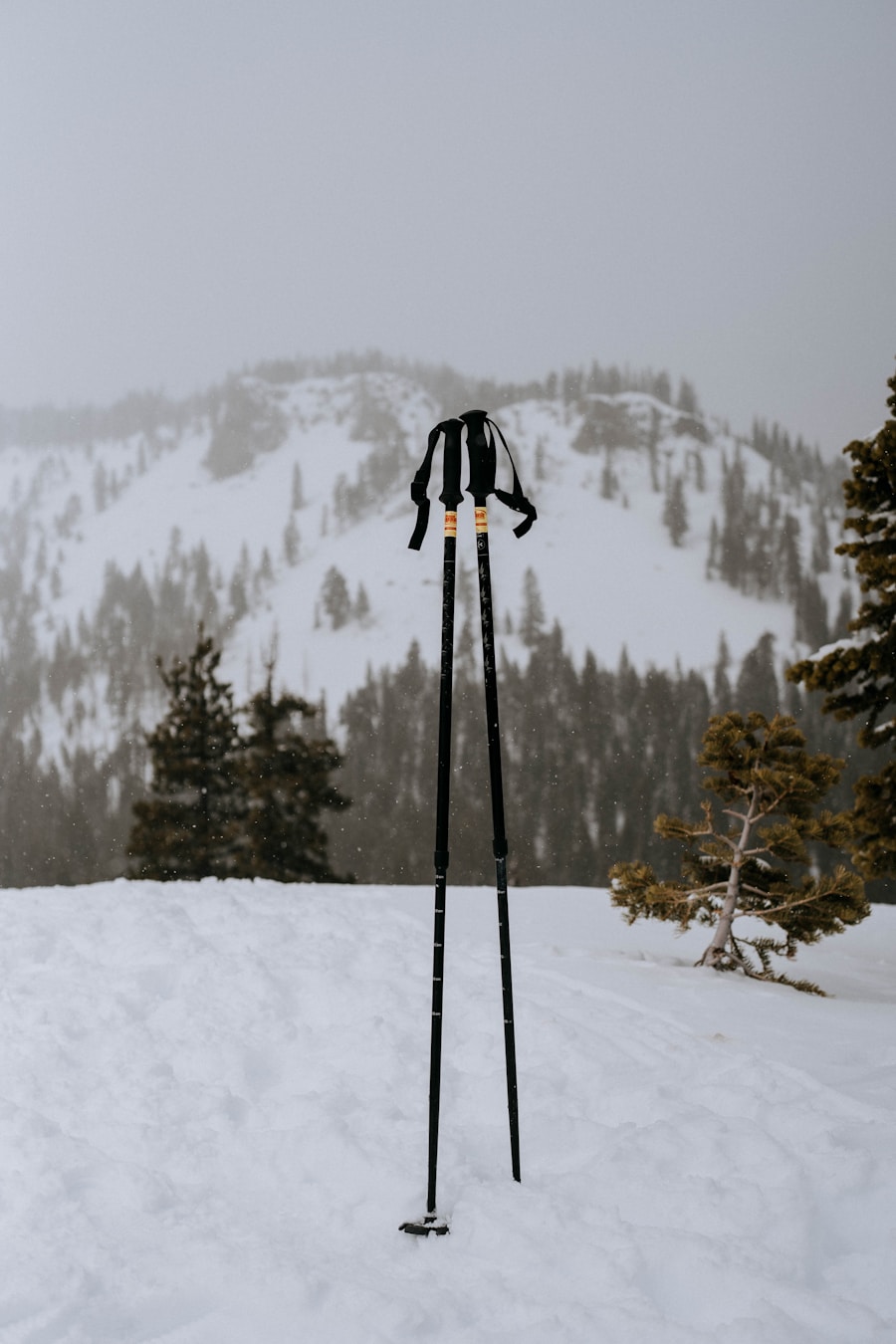Selecting the appropriate length for a hiking pole is a critical decision that can significantly influence the overall hiking experience. Hiking poles, also known as trekking poles, serve multiple purposes, including providing stability, reducing strain on joints, and enhancing balance on uneven terrain. The right length ensures that these benefits are maximized, allowing hikers to navigate trails with greater ease and confidence.
A pole that is too short can lead to poor posture and increased fatigue, while one that is too long may cause discomfort and hinder movement. Moreover, the correct length of a hiking pole can enhance safety during treks. On steep descents, for instance, a properly sized pole can help distribute weight more evenly, reducing the risk of slips and falls.
Conversely, an ill-fitting pole can lead to instability, particularly on rugged or slippery surfaces. Therefore, understanding the importance of choosing the right length is not merely about comfort; it is also about ensuring a safer and more enjoyable hiking experience.
Key Takeaways
- Choosing the right length hiking pole is important for comfort, stability, and injury prevention
- Factors to consider when selecting hiking pole length include your height, the type of terrain you’ll be hiking on, and personal preference
- To measure the correct hiking pole length, stand with the pole upside down and adjust it until your forearm is parallel to the ground
- Using the correct length hiking pole can reduce strain on your joints, improve balance, and increase endurance
- Using the incorrect length hiking pole can lead to discomfort, instability, and potential injury
- Adjust hiking pole length for different terrain to optimize performance and comfort
- Test the comfort and fit of a hiking pole by gripping it and simulating different hiking movements
- Maintain and care for your hiking poles by cleaning them regularly, checking for damage, and storing them properly
Factors to Consider When Selecting Hiking Pole Length
Height and Arm Length
A taller individual will require longer poles, while shorter individuals will benefit from shorter poles. However, height alone does not dictate the ideal length; the hiker’s arm length and personal preference also play crucial roles. For example, someone with longer arms may prefer a slightly longer pole to maintain a comfortable angle while walking.
Terrain and Adjustability
The type of terrain that will be encountered during hikes is another important factor to consider. For instance, if a hiker frequently traverses steep inclines or declines, they may prefer poles that can be adjusted to different lengths for optimal performance. Adjustable poles offer versatility, allowing hikers to modify their pole length based on the specific demands of the trail.
Weight and Durability
The weight of the hiker can also influence pole selection; heavier individuals may require sturdier poles that can withstand greater force without bending or breaking.
How to Measure the Correct Hiking Pole Length

Measuring the correct length for hiking poles involves a straightforward process that can be done at home or in-store. A common method is to stand upright with your arms relaxed at your sides. From this position, bend your elbows at a 90-degree angle and measure from the ground to your wrist.
This measurement typically provides a good starting point for determining the ideal pole length. Many manufacturers offer sizing charts that correlate this measurement with specific pole lengths, making it easier for hikers to find their match. In addition to this method, it is essential to consider personal comfort and style when selecting pole length.
Some hikers may prefer poles that are slightly longer or shorter than their measured size based on their walking style or specific needs. For example, those who enjoy a more aggressive hiking style may opt for longer poles to enhance reach and leverage on steep climbs. Conversely, hikers who prioritize stability on flat terrain might choose shorter poles for better control.
Benefits of Using the Correct Length Hiking Pole
| Benefits of Using the Correct Length Hiking Pole |
|---|
| 1. Reduced Impact on Joints |
| 2. Improved Stability and Balance |
| 3. Increased Endurance |
| 4. Enhanced Posture and Alignment |
| 5. Better Uphill and Downhill Support |
Using hiking poles of the correct length offers numerous benefits that enhance both performance and comfort during hikes. One of the primary advantages is improved stability. Properly sized poles provide additional points of contact with the ground, which can help maintain balance on uneven surfaces.
This stability is particularly beneficial when navigating rocky paths or crossing streams, where footing can be uncertain. Furthermore, using the correct length hiking pole can significantly reduce strain on joints and muscles. When poles are appropriately sized, they allow for a natural arm swing that complements the body’s movement while walking.
This natural motion helps distribute weight more evenly across the body, alleviating pressure on knees and hips during descents and ascents alike. As a result, hikers may experience less fatigue and soreness after long treks, enabling them to enjoy their outdoor adventures more fully.
Consequences of Using the Incorrect Length Hiking Pole
The repercussions of using hiking poles that are not the correct length can be quite detrimental to both comfort and safety. A pole that is too short can lead to an awkward posture, forcing hikers to lean forward excessively. This position not only increases fatigue but also places undue stress on the back and shoulders.
Over time, this can result in discomfort or even injury, particularly during extended hikes. On the other hand, using poles that are too long can create challenges in maneuverability and control. Hikers may find it difficult to plant their poles effectively on uneven terrain, leading to instability and potential falls.
Additionally, overly long poles can cause excessive strain on the wrists and arms as hikers struggle to maintain proper form while walking. In extreme cases, using incorrectly sized poles can lead to accidents that could have been easily avoided with proper equipment.
Adjusting Hiking Pole Length for Different Terrain

One of the key advantages of adjustable hiking poles is their ability to adapt to various terrains encountered during hikes. For steep ascents, it is generally advisable to shorten the poles slightly. This adjustment allows for a more efficient upward motion by enabling hikers to maintain an optimal angle with their arms while climbing.
Shorter poles also help prevent overreaching, which can lead to loss of balance. Conversely, when descending steep slopes or navigating uneven ground, extending the poles can provide additional support and stability. Longer poles allow hikers to plant their poles further ahead of their body, which helps distribute weight more evenly and reduces impact on joints during descents.
By adjusting pole length according to terrain conditions, hikers can enhance their overall performance and safety on diverse trails.
How to Test the Comfort and Fit of a Hiking Pole
Testing the comfort and fit of hiking poles is an essential step before committing to a purchase or embarking on a hike. When trying out poles in-store or at home, it is crucial to hold them in a natural walking position with elbows bent at approximately 90 degrees. This position should feel comfortable and allow for a smooth arm swing without straining the shoulders or wrists.
Additionally, it is beneficial to walk around while using the poles to assess their performance in real-time conditions. Hikers should pay attention to how the poles feel during movement—whether they provide adequate support without causing discomfort or fatigue. If possible, testing poles on varied terrain can offer insights into how well they perform under different conditions.
Ultimately, finding a pole that feels comfortable and fits well will contribute significantly to an enjoyable hiking experience.
Tips for Maintaining and Caring for Your Hiking Poles
Proper maintenance and care of hiking poles are essential for ensuring their longevity and optimal performance over time. After each hike, it is advisable to clean the poles thoroughly to remove dirt, mud, or debris that may have accumulated during use. A simple wipe-down with a damp cloth can help prevent corrosion and maintain functionality.
Additionally, regular inspections of the locking mechanisms and tips are crucial for safety and performance. Hikers should check for any signs of wear or damage that could compromise the integrity of the poles. If any issues are detected—such as cracks in the shaft or malfunctioning locks—it’s important to address them promptly by either repairing or replacing the affected components.
Storing hiking poles properly is another vital aspect of maintenance. When not in use, poles should be kept in a cool, dry place away from direct sunlight to prevent degradation of materials over time. If possible, disassembling adjustable poles for storage can help protect them from damage and ensure they remain in good condition for future adventures.
By following these maintenance tips and understanding how to select and use hiking poles effectively, outdoor enthusiasts can enhance their hiking experiences while ensuring their equipment remains reliable and safe for years to come.
When determining what length hiking pole you need, it’s important to consider factors such as your height and the type of terrain you’ll be hiking on. For more tips on choosing the right hiking gear, check out this article on the best travel CPAP machines here. Having the right equipment can make a big difference in your outdoor adventures.
Love travel? Join Our Facebook Community For More Tips.
FAQs
What is the purpose of hiking poles?
Hiking poles are used to provide stability and support while hiking, especially on uneven terrain or steep inclines. They can also help to reduce strain on the knees and lower body.
How do I determine the length of hiking pole I need?
To determine the length of hiking pole you need, stand with the pole in your hand and your elbow at a 90-degree angle. The pole should be parallel to the ground at this position. Adjust the length accordingly.
What are the benefits of using the correct length hiking pole?
Using the correct length hiking pole can provide better stability, support, and balance while hiking. It can also help to reduce fatigue and strain on the body, especially on longer hikes or challenging terrain.
Can I use adjustable hiking poles instead of fixed-length poles?
Yes, adjustable hiking poles can be a good option as they allow you to customize the length based on the terrain and your personal preference. They are versatile and can be used for various types of hiking.
Are there different lengths of hiking poles for different activities?
Yes, there are different lengths of hiking poles for different activities. For example, shorter poles are often used for hiking on flat terrain, while longer poles are preferred for steep inclines or downhill hiking. It’s important to consider the specific activity and terrain when choosing the length of your hiking poles.
